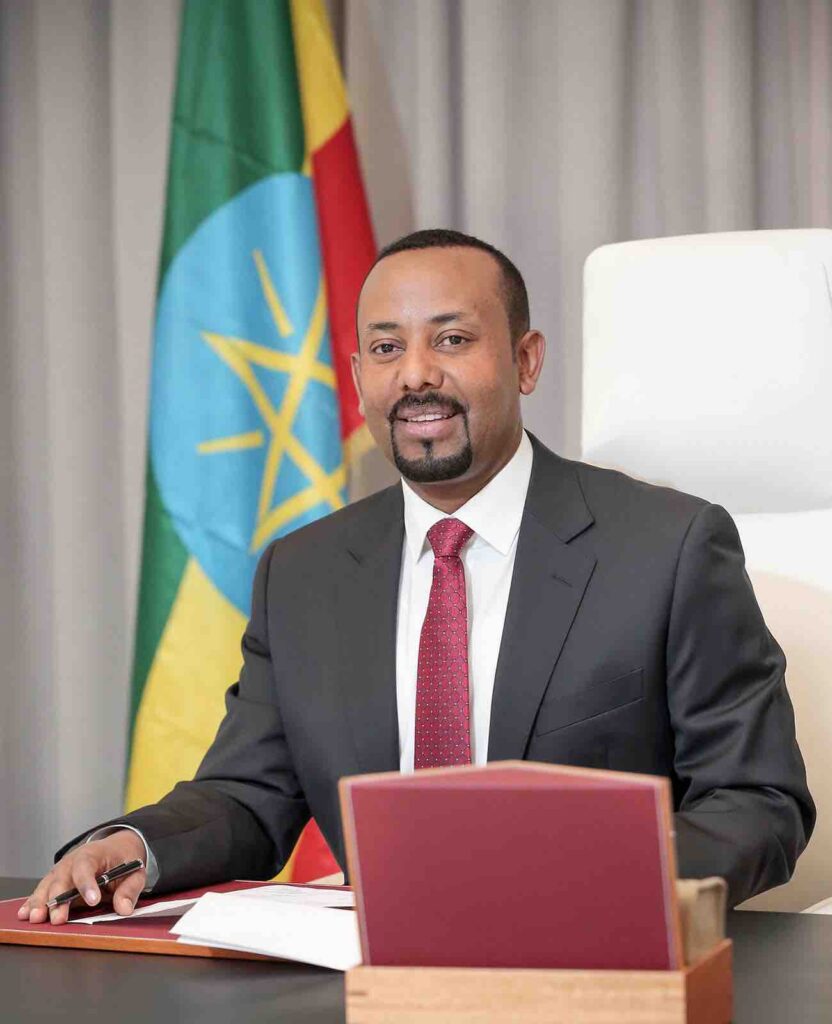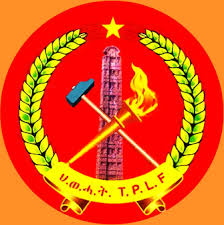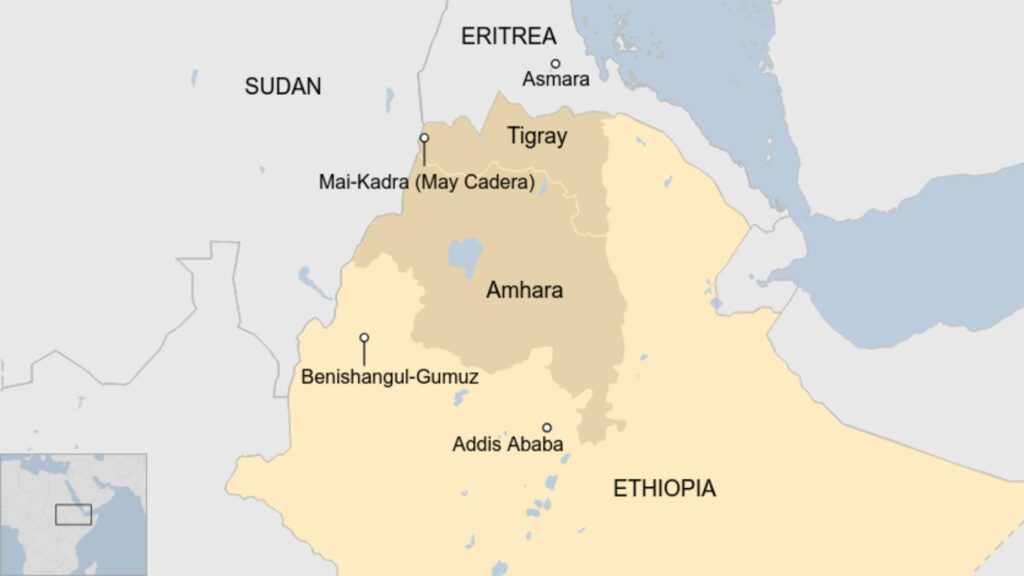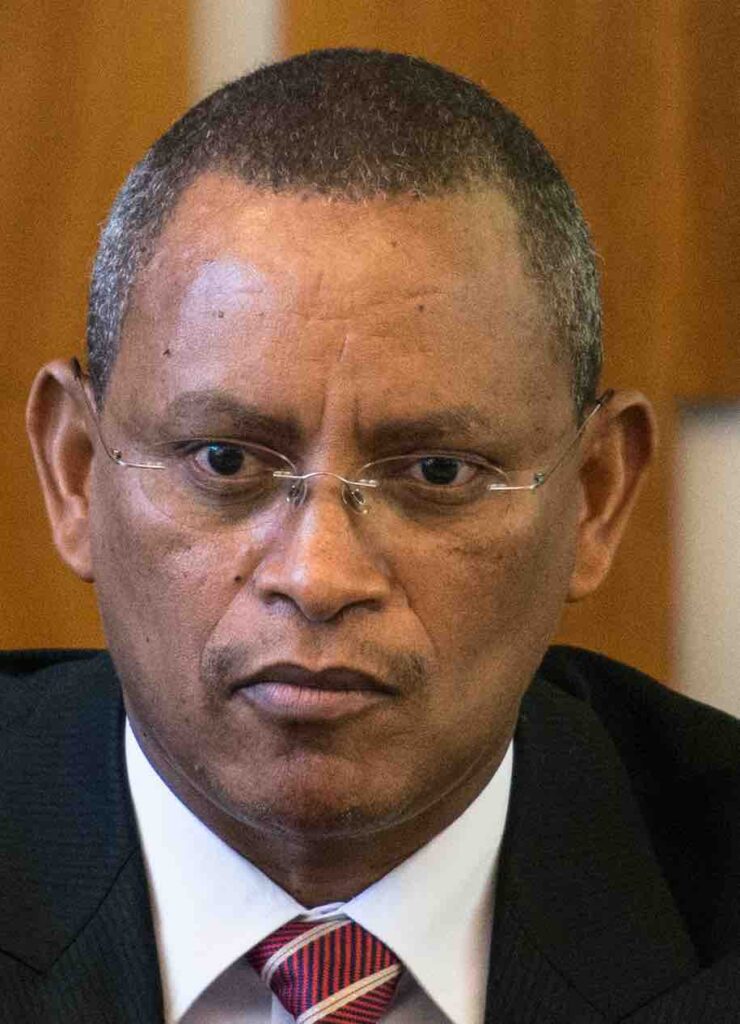Table of Contents
The civil war in Ethiopia has escalated in the past few days. Ethiopia’s federal forces (under Prime Minister Abiy Ahmed) are fighting a resilient TPLF (Tigray People’s Liberation Front) force.
PM Abiy, who won the Nobel peace prize in 2019, has been under the scanner for his offensive against the Tigrayans. What started as a vision to unite Ethiopia as per PM Abiy, has now taken a violent turn.
With Ethiopia under the clutches of a civil war, hundreds of troops and fighters have already been killed and thousands of civilians have been displaced. It is estimated that hundreds of civilians have been killed and their homes destroyed. Though Abiy’s government denies any civilian casualty (as per the news sources).
The Tigray region has been completely cut off from the rest of Ethiopia and the rest of the world. There is no electricity and no internet. The banking services are not operational. Government offices are shut. Limited media is permitted. And, the refugee situation in Sudan is getting worse.
Ethiopia People’s Revolutionary Democratic Front (EPRDF)
Tigrayans and TPLF have played a vital role in Ethiopia’s politics for nearly three decades.
Tigrayans form 6% of the total estimated population of 110 million in Ethiopia.
Ethiopia was under the rule of dictator Mengistu Haile Mariam from 1977 to 1991. In 1991, Ethiopia People’s Revolutionary Democratic Front (EPRDF) toppled the dictatorship. They created ethnic federalism in the country.
EPRDF consisted of 4 ethnic parties – TPLF, Amhara National Democratic Movement (ANDM, now Amhara Democratic Party), Oromo Peoples’ Democratic Organization (OPDO, now Oromo Democratic Party), and Southern Ethiopian Peoples’ Democratic Movement (SEPDM).
Ethiopia, before becoming a federal entity, consisted of multiple ethnic groups and regions. Each group (region) had its own language, customs, and way of living. As per the 1995 constitution of Ethiopia, ethnic groups were given rights to either be a part of federal Ethiopia or to secede from it. In any case, the control was to be given to the regional government.
EPRDF was largely influenced by TPLF before Abiy Ahmed took charge in 2018.
Abiy Ahmed’s contribution
Prime Minister Abiy Ahmed came to power in 2018 after being accepted by a majority of Ethiopians. His vision consisted of peace and prosperity. The policy gathered unconditional support from within the country and also from the international community.

Courtesy – Wikipedia
In his short working tenure, he released thousands of political prisoners. Also, he brought back exiled politicians and laid the foundation for free and fair elections.
One of the biggest achievements of PM Abiy was to successfully initiate talks with their neighbors Eritrea. He brokered a peace deal with them after years of war.
Tigrayans, who fought against Eritrea in the Ethiopian-Eritrean war all the years were not happy with the peace deal.
He also promoted women to key positions in the government including his cabinet. Under him, he appointed the first female President of Ethiopia, Sahle-Work Zewde.
The EPRDF merger
In order to centralize the governance, Abiy decided to merge the EPRDF coalition parties into a new party. The party was named the Prosperity Party in 2019. As per Abiy, this move was aimed to unify the country where otherwise it was ruled by separate regional parties in separate regions. The move was expected to bring peace and prosperity to the otherwise polarized nation.
Civil War in Ethiopia: Differences between TPLF And PM Abiy Ahmed
The decision to fuse the EPRDF coalition parties into a single Prosperity Party was backed by all the parties except TPLF which decided to go a separate way.
It is said that the differences already existed between Abiy and TPLF when the former came to power in 2018. While Abiy always backed the idea of centralizing the power, TPLF and most of the groups from other states adhered to the idea of ethnic federalism. The conflict brewed within the states against Abiy’s plan of centralization of power, but the revolting voices were crushed by Abiy’s federal forces.

Courtesy – Wikipedia
Another view of the bitter relationship between PM Abiy and TPLF stems out of the opinion that TPLF abused its power and controlled EPRDF for the three decades it ruled. Oromos, which is the largest ethnic group in the country had always complained of marginalization. Abiy, who is of Oromo origin, thus has his differences. It is said that the ill-treatment of Oromos is one of the primary reasons why Abiy considered centralizing and eliminating any uneven distribution of power.
On the other hand, TPLF has accused PM Abiy of taking away their fundamental rights.
Civil War in Ethiopia: Chain of events
The war between PM Abiy’s federal forces and TPLF began on November 4, 2020, when pro-TPLF forces attacked a federal military base in Tigray.
Tigray held its regional elections in September 2020 which PM Abiy termed as illegal and unconstitutional as he had already postponed the general elections to a later date due to the COVID pandemic.
In response, TPLF identified that the constitutional term of the present government ended on October 5, 2020, and therefore, PM Abiy was illegitimately holding the office of power.
A proposal to tag TPLF as a terrorist organization was also proposed in the federal parliament.
These events were the predecessors to the TPLF attacks of November 4 2020 on Ethiopian National Defense Force (ENDF) Northern Command headquarters in Mekelle (capital of Tigray).
Ethiopian federal forces initiated their brutal offensive against TPLF and declared a state of emergency in the region. The internet services were shut, electricity cut off, and all government offices were closed. An interim government for Tigray was created by the federal parliament.
As part of the offensive, Ethiopian federal forces retook some cities controlled by TPLF. Internal sources state that around 600 civilians were killed on the night of 9-10 November in the town of Mai Kadra by forces loyal to TPLF. Another report stated that in response to the massacre in Mai Kadra, a few Tigrayans were killed in Humera as part of the shelling by the federal forces in the region.

Courtesy – BBC
A few sources say that Eritrea is also involved in the conflict and is fighting on the side of Ethiopian federal forces.
Abiy’s Government Ultimatum and Eritrean Forces
On 23 November 2020, Abiy’s government issued an ultimatum to the TPLF to surrender within 72 hours. When the ultimatum expired on 26 October 2020, the federal forces launched attacks on Mekelle. On 28 November 2020, the federal forces claimed that they have gained control over the city and that TPLF has been defeated. Debretsion Gebremichael, TPLF chairman, refuted the claims and said that they will continue to fight for their cause, rights, and the integrity of their land. He though confirmed that TPLF forces will withdraw from Makelle. As per the sources, around 27 people were killed and over 100 injured in the attack.
On 28-29 November 2020, Eritrean Defence Forces (EDF) carried out the Axum massacre where 700-800 civilians were killed.
The EDF forces then killed 100-150 civilians in Idaga Hamus on 30 November 2020. 17 other civilians were killed in Hadish Hiwot on 2 December 2020. The war reached the towns of Hagere Selam, Samre, Dogu’a, and Kolla Tembien by 16 December 2020.
Eritrea started withdrawing its troops from Tigray on 26 December 2020. 9 January 2021, it was reported that TPLF executed around 300 refugees in the Hitsats camp.
In February 2021, it was reported that almost 40% of the Tigray region was captured by EDF. The report also stated that the Eritrean army had its own agenda and was not acting on the command of Ethiopia.
The Maekelay zone in Tigray is currently occupied by Eritrean forces. They occupy a good part of North Tigray. The Ethiopian government seeks the help of Eritrean forces and Amhara militias as ENDF alone is not capable of defeating TDF.
Unprecedented Offensive
In April 2021, the Ethiopian army executed 11 Tigray civilians. On May 6 2021, the Ethiopia’s House of Peoples’ Representatives declared TPLF as a terrorist organization.
TDF retook Mekelle on 8 June 2021. 6 July 2021, TDF forces advanced towards West Tigray and later captured Southern Tigray. Though Abiy government declared ceasefire after TDF took Mekelle, he resumed the offensive considering the attacks by TDF.

Courtesy – Wikipedia
On 11 August 2021, Oromo Liberation Army (OLA) and TDF joined forces against Abiy’s government. On 31 October 2021, TDF captured Kombolcha. 2 November 2021, Ethiopian Government declared state of emergency for 6 months.
3 November 2021, TDF and OLA joined forces with other 7 rebel groups. It was called – United Front of Ethiopian Federalist and Confederalist Forces.
On 24 March 2022, Abiy’s government allowed humanitarian aid to reach Tigray region for help. In August 2022, although, the war continued and seems it is still far from over.
Civil War in Ethiopia: Human Rights Violations and Refugee Concerns
As part of the conflict, close to 50,000 civilians have already fled to Sudan and many are still waiting to cross the border. It has also been reported that Abiy’s government has deployed troops to stop the civilians from crossing over to Sudan. Such a move could lead to more civilian casualties and human rights violations.
Abiy’s government, however, has always taken a stand that there have been no civilian casualties in their operation against TPLF. The lack of internet services in the region has made it tough to verify the statements.
Another impact of the conflict is that Abiy’s government has started rounding up Tigrayans in various positions within the government and armed forces. Many Tigrayans deployed as part of UN peacekeeping forces have been asked to return to Ethiopia. This could lead to mistreatment (torture, detention) of the Tigrayans by the government on their arrival. If such a thing happens, it would mean the violation of the non-refoulment principle and may bring other countries into the fray.
The non-refoulment principle on a universal level as per Article 33 (1) of the 1951 Convention relating to the Status of Refugees states:
“No Contracting State shall expel or return (‘refouler’) a refugee in any manner whatsoever to the frontiers of territories where his life or freedom would be threatened on account of his race, religion, nationality, membership of a particular social group or political opinion.”
Concerns
The possibility of Eritrea being involved in the conflict and Sudan being affected by the refugee influx may force other countries in the region to enter the war and destabilize the already affected Horn of Africa. For example, Al-Shabaab, a terrorist organization in Somalia may take advantage of the war and create more issues within the country.
According to the United Nations report, almost 1 million people have been internally displaced due to the conflict. Thousands of Eritrean refugees have run out of food in the Tigray region.
As per the reports, access to the medical facilities has also been hampered in the region due to restrictions by the federal government, which the government denies.
Civil War in Ethiopia: What next?
Both TPLF and Abiy Ahmed are standing their ground. TPLF and Tigrayans want their ethnic freedom while PM Abiy wants his centralization policy as a source to govern Ethiopia. Considering the current scenario, the civil war in Ethiopia seems far from over. The international community has come forward and asked both the parties to settle the issues via talks and negotiations, but that seems like a futile attempt.
The outcome of the conflict will decide the fate of PM Abiy and the ethnic federalism in Ethiopia. The brutal suppression by federal forces could lead to TPLF taking severe measures and seceding from Ethiopia. This would mean another protracted war in the region and the disintegration of Ethiopia.
CURATED & WRITTEN BY
AYUSH PANDYA
(AUTHOR – THE UNPRECEDENTED CULT)